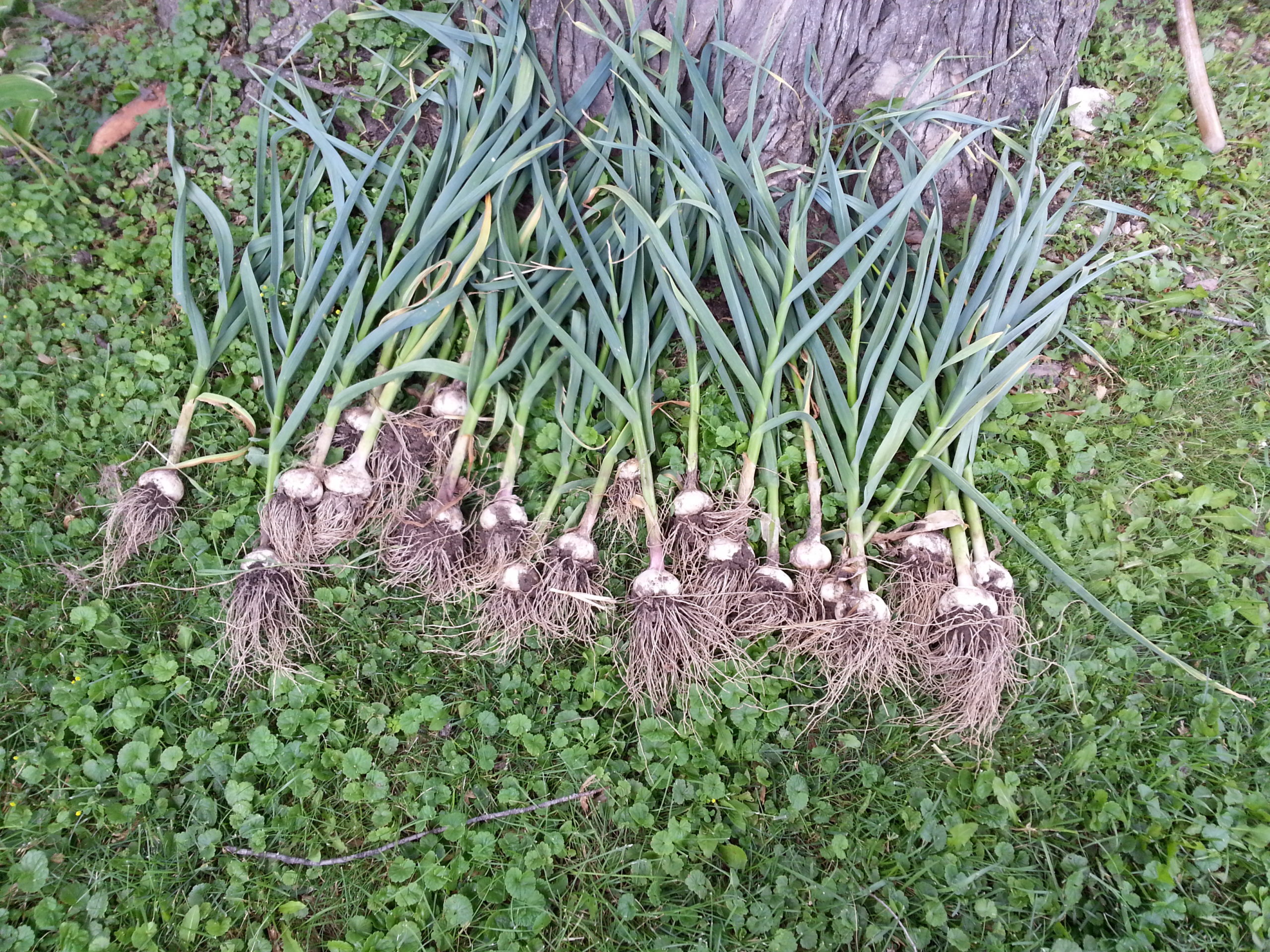Garlic, the Lost Vegetable By: Joey Baird

ATTRIBUTION: Joey and Holly Baird
It is very easy to grow garlic compared to other crops you plant it in the fall. You want to get your garlic in the ground about 3 to 4 weeks before the ground freezes, so the roots can become established. If there is top growth that appears before the ground freezes you can mulch it with straw or leaves very lightly. It is best to use the garlic cloves to plant as opposed to garlic seeds, as the seeds take at least 2 years to form into bulbs. You need to break open the bulbs to find the cloves. You will find 7 to 12 cloves inside, just like what you would if you open it up to use in cooking. The key to large garlic bulbs at harvest is planting large cloves in the fall.
When planting, prepping the soil is needed, but do not add any organic fertilizer or compost at this time. You want to pick a spot that is in full sun not only at the time of planting, but also will be full sun in early and late spring (full sun meaning 8 hours or more). You can pre-soak the cloves for 24 hours before planting. We chose to use moo poo tea from manuretea.com to soak our cloves. After soaking you want to plant each clove with the flat root part down. This is the part that as it sat in the clove was at the bottom. It is best to plant your garlic about 2 inches deep and 1 foot apart. If you have multiple rows space them 12 to 18 inches apart. Be sure you know where you planted them when it comes spring. Garlic is one of the toughest plants and we have witnessed this as the record low temperatures did not affect our crop at all in 2013. For most of its life you don’t have to weed it or do really anything to it until spring.
In the spring, you will want to fertilize the garlic with good compost or organic fertilizer. Stop fertilizing as you see the scapes forming. Scapes are the top growth that the plant puts out and they are the seed pods. They are a long snake like growth about 6 to 12 inches long that curl over. Cut these off before they open. Cutting these off allows the plant to focus its energy to bulk up the bulb and not to focus on seed production. You will know it is time to harvest when you see the bottom set of leaves start turning yellow which will be about 2 to 3 weeks after you cut off the scapes. You can dig, not pull, one bulb up to see if the bulb looks filled out. If all looks right go ahead and dig them out. A garden fork is the best tool but a shovel will work. Don’t try to pull them out as it will not work well and you may snap off the stem.
When harvesting is done you will need to cure the garlic before using or storing it. Bunch them together in bundles of 5 or 6 hanging them up with the bulbs down in a well-ventilated area away from direct sunlight. Let the garlic dry for 3 or 4 weeks or until all the stalk is brown and dry. Letting them dry allows all the nutrients in the stalk to go into the bulb. You can then cut the stalk off and store the garlic bulbs in a cool dry area for later use. Be sure to save the largest cloves for planting again in the fall.
 Joey and Holly Baird are the husband-and-wife team behind The Wisconsin Vegetable Gardener (TheWisconsinVegetableGardener.com). They maintain a YouTube channel dedicated to the topics of organic gardening, home canning, and simple home living. Holly’s home canning efforts have won her ribbons from the Wisconsin State Fair including a Best of Show award. You can follow them both on Twitter @TheWIVegGardenr.
Joey and Holly Baird are the husband-and-wife team behind The Wisconsin Vegetable Gardener (TheWisconsinVegetableGardener.com). They maintain a YouTube channel dedicated to the topics of organic gardening, home canning, and simple home living. Holly’s home canning efforts have won her ribbons from the Wisconsin State Fair including a Best of Show award. You can follow them both on Twitter @TheWIVegGardenr.
